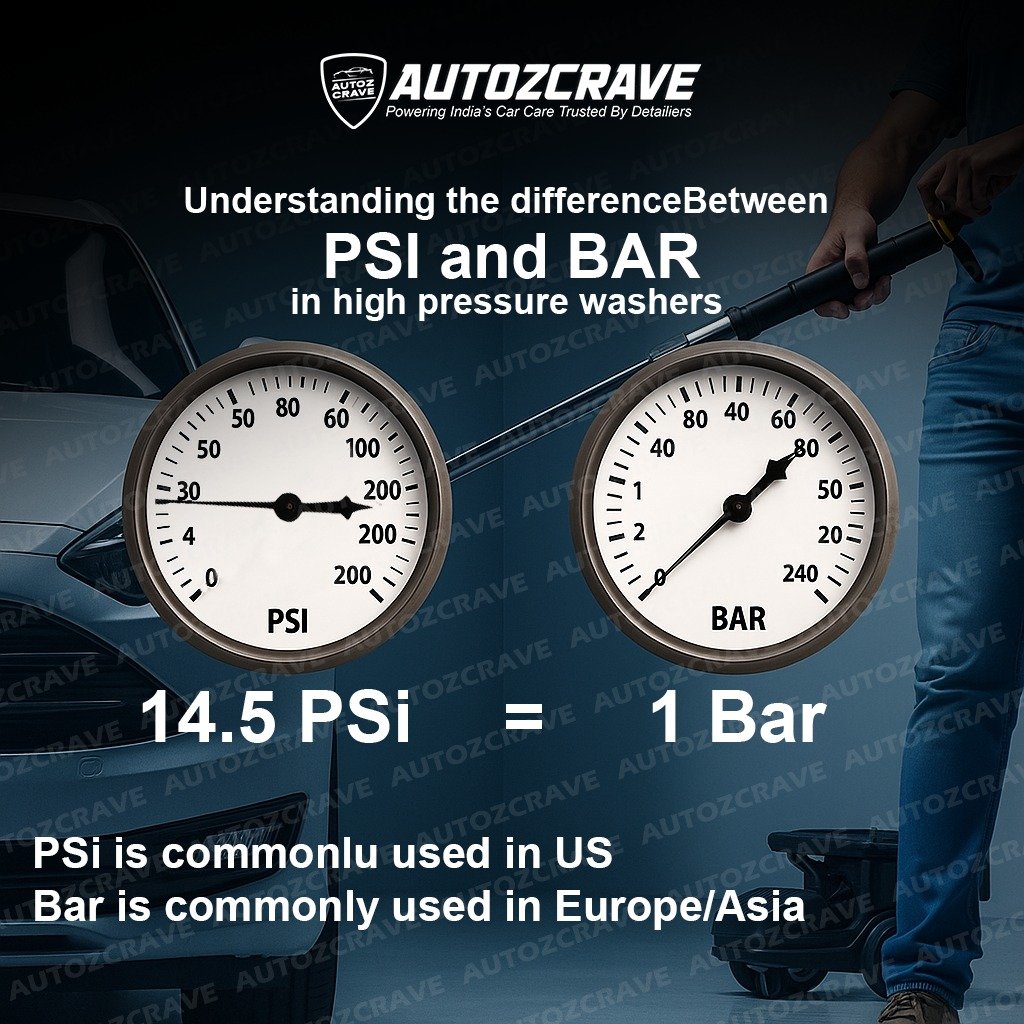Home Blog Details


Home Blog Details


Post By Autozcrave || 2025-07-01
In this blog, we will explain the difference between PSI and Bar, what they mean, how they affect your pressure washer, and how to choose the right one for your car wash needs. Let’s make it simple and clear.

PSI stands for Pounds per Square Inch. It tells you how much pressure the water will have when it comes out of the washer. In simple words, PSI shows how strong the water force is.
For example, if your pressure washer has 2000 PSI, it means the water is coming out with 2000 pounds of pressure on every square inch. Higher PSI means stronger cleaning power. This is good for removing dirt, mud, oil, and stains from cars.
Bar is another way to measure pressure. It is used in many countries, especially in India and Europe. 1 Bar is equal to 14.5 PSI.
So, if your washer has 150 Bar, it means it has around 2175 PSI. Both PSI and Bar measure the same thing water pressure but in different units.
Many people ask, “What’s the difference between PSI and Bar in high pressure washers?” The answer is simple:
So, when you compare pressure washer PSI vs Bar, you are comparing the same thing, just in different units.
It is easy to compare them using simple math:
You can use this chart when buying or comparing machines. This will help you choose the right washer for your car detailing studio.
When buying a pressure washer, don’t look at PSI or Bar only. There are three important pressure washer units you should check:
If you are wondering which is better for car cleaning PSI or Bar, the answer is: both are good. You just need to look at the total power.
Here is a quick guide for car detailing:
So, if you want faster cleaning and better results, go for higher PSI or Bar.
|
Bar |
PSI |
|
100 |
1450 |
|
120 |
1740 |
|
150 |
2175 |
|
200 |
2900 |
This table helps you compare PSI and Bar easily when you look at different pressure washer models.
When people talk about pressure washer ratings, they usually mean:
Let’s take an example from Autozcrave High Pressure Washers:
These machines are designed for detailers who want power, speed, and durability.
Many people ask: “Is PSI or Bar more important for pressure washers?”
The truth is they both measure the same thing. So neither is more important. What really matters is how much pressure you need for your work.
If you are running a detailing studio, we suggest using machines between 150 to 200 Bar (or 2200 to 2900 PSI) for the best results.
Choosing the right pressure washer becomes easy when you understand the difference between PSI and Bar. Both are just different ways of measuring pressure. Focus on:
If you want the best machines built for detailing studios, check out Autozcrave’s high pressure washer range. Our machines are powerful, efficient, and trusted by hundreds of detailers across India.
PSI stands for Pounds per Square Inch. It shows how much pressure the water has when it comes out of the pressure washer. Higher PSI means stronger cleaning power.
Bar is a metric unit that also measures pressure. It is commonly used in India and Europe. 1 Bar is equal to 14.5 PSI.
Both PSI and Bar measure pressure. PSI is used more in the USA, and Bar is used in India. They measure the same thing using different units. 1 Bar = 14.5 PSI.
To convert Bar to PSI, simply multiply the Bar value by 14.5. For example, 150 Bar = 2175 PSI.
You can compare PSI and Bar using the formula:
1 Bar = 14.5 PSI
1 PSI = 0.0689 Bar
Both are important because they measure the same thing — pressure. The key is to choose the right level of pressure based on your cleaning needs.
For car detailing, a pressure washer with 150 to 200 Bar (or 2200 to 2900 PSI) is ideal. It gives strong cleaning without damaging the car surface.
The three important units are:
Yes, a 100 Bar (1450 PSI) washer is good for regular washing. But for faster cleaning and removing tough dirt, 150 or 200 Bar is better.
You can check Autozcrave’s professional pressure washer range, which is designed for detailing studios in India. They offer 100, 150, and 200 Bar models with high-quality build and performance.